| Umělec 2000/5 >> Who, How and for Whom (152 years later) | Просмотр всех номеров | ||||||||||||
|
|||||||||||||
Who, How and for Whom (152 years later)Umělec 2000/501.05.2000 Saša Glavan | focus | en cs |
|||||||||||||
|
"The initial idea that triggered the concept for the exhibition What, How and for Whom at the Croatian Association of Artists in Zagreb, Croatia, 16 June 2000 dates back to 1998 when the activist organization and publishing house Bastard/Arkzin republished The Communist Manifesto to mark its 150th anniversary. Only at first glance does this decision seem like a nostalgic gesture completely devoid of any relevance to the current situation there. The fundamental Marxist idea proclaiming the total decay of capitalism in the near future seems to have flopped completely. And today, at the outset of a new century, Capitalism has assumed the hale and hearty position of being the only, almost irrefutable, model.
Nevertheless, as Slavoj Žižek1, the celebrated Slovenian philosopher, perfectly articulated in the last section of An Introduction to the 150th Anniversary Edition of the Communist Manifesto: “...perhaps the answers offered by The Communist Manifesto are no longer pertinent. However, in its very deficiency, The Communist Manifesto continues to address us, imposing upon us the task of reinventing the way out of the vicious cycle of capitalism...”2 Why this task is more relevant to the countries that emerged from the other side of the iron curtain is a rather obvious question. The last stages of the so-called process of transformation is characterized by a prevailing aversion to the past and the total acceptance of Western models (something very often confused with the process of attaining freedom). The economic development that marked most of the “transition” countries over the last 10 years was mainly fueled by the desire for rapid absorption of what was thought to be missing (the so-called shock economy). And the prophets, mostly American wonder-children who were globetrotting Eastern Europe, brought with them a unified model, where “...the only difference between Mongolia and Slovenia was a short flight....”3 So as a result of this “instead of an impossible balance between two components—full integration into the global market while retaining a specific national and ethnic identity—we, in post-communist Eastern Europe, are getting the worst of both worlds: an unrestrained market combined with ideological fundamentalism....”4 The country of Croatia, where the curators Ana Dević, Nataša Ilić and project coordinator Sabina Sabolović realized the project, was in a slightly different position due to Tuđman’s totalitarian regime. Not so very different when comparing the results but more so if we take into account the somehow “unique” process that brought the country to its present stage. Therefore the absence of any reflective analysis of the recent past or the transitional period, to a great extent, was the impetus for the project. It tended to function as a statement saying that the economic analysis and the descriptions of the functioning of capital as explained in the Manifesto were still more than relevant. One of the early press releases by the curatorial trio stated: “The exhibition was meant to be just one of three interrelated segments of a bigger project, focusing on the economic layers of the Manifesto and its present relevancy expressed in the artistic practice. The conference was meant to deal with the political ideas expressed in The Communist Manifesto, from the standpoint of fashionable post-modernist proclamations regarding the end of all ideologies, needed a re-evaluation. By offering a young generation of artists, art critics, and curators the opportunity to develop knowledge concerning different aspects of the realization of contemporary art projects, the workshops and presentations attempt to reestablish an artistic context and tradition relevant today but lost after the outbreak of the war, as well as to encourage closer collaboration between the NGO sector and art institutions...” Due to various circumstances (most certainly money issues and the staff’s time problems) the end result was an exhibition and presentation of the immediate art scene in the Balkans accompanied by a handful of lectures. The exhibition presented 47 artists and art groups from 17 countries, including: Albania, Austria, Belgium, Bosnia & Herzegovina, Bulgaria, Croatia, The Czech Republic, France, Hungary, FYR of Macedonia, Poland, Rumania, Russia, Slovenia, Sweden, Ukraine and Yugoslavia. And it dealt with a wide range of social issues with special focus on the complex relations between art, life and economy. Though the concept was inspired by The Communist Manifesto, the curators’ aim was not to present artistic responses to the most notorious text of the last two centuries, but were instead more interested in presenting different artistic strategies dealing with the questions that Marx’s text opened. Perhaps the project that best related to the exhibition’s theme was by the Croatian artist Andreja Kulunčić. Her work Nama, 1908 employees, 15 department stores dealt with one social aspect of the effect of the transition: the decay of Nama, once the strongest chain of department stores in Croatia. Nama followed in the same steps as many of the dinosaur Eastern companies unable to follow contemporary capitalist demands by ineluctably sliding into bankruptcy. The artist focused on the typically neglected party, the individual destinies of the company’s 1908 workers faced with unemployment, many of whom were too old, too computer illiterate or too one thing or another to even hope to ever find a new job. The artist placed the photos of three middle-aged women, employees of NAMA, on billboards in Zagreb’s city center accompanied by simple facts about the company. “The poster presents a person ‘sentenced’ to economic instability, but on the other hand, it suggests at the same time certain qualities such as trust, security, and stability in typical advertising language...”5 The artist did not only want to raise questions about the social aspects of change in our society, where those who can’t keep up are left behind; she also offered platform discussions over the Internet and by snail-mail. Again the reactions were hardly productive and arose mainly from the point of view that the artist was only using other people’s problems to create a work for the exhibition.... Another direct allusion to the economy, which is sometimes described as a science of choices attempting to achieve the greatest economic result with the lowest possible input, was placed under the spotlight during the execution of the exhibition. Croatian artist Tomo Savić-Gecan could not realize his work because of a lack of financial backing. But the artist wasn’t excluded from the exhibition. An automatic answering machine ran throughout the exhibition on which both curators explained Gecan’s work and the circumstances that prevented its execution. The title of the exhibition, What, How and for Whom, refers to the three basic questions every profit driven company must ask itself before launching a new product. These same questions could also be applied when planning the concept and the realization of the exhibition. First, setting up an international exhibition in what was an almost isolated country over the last decade and placing the Croatian artists in a wider European context has a relevance of its own. The exhibition also re-established a bridge between social and activist Croatian artists from the late 1960s and the new generation coming into focus at the end of the1980s, when the old system with its whole set of values and ideals collapsed. The importance of the event also lay in the collaboration of different governmental (Croatian Association of Artists) and non-governmental institutions working within culture and activism (net.center Mama and Arkzin), which before had been more the exception than the rule. And finally the aim of the exhibition was to show the young generation what was or is happening around them. Notes 1. “ ...One of the most arresting, insightful, and scandalous thinkers in recent memory....” (Introduction on the cover of the booklet An Introduction to the 150th Anniversary Edition of the Communist Manifesto, Arkzin, Zagreb, 1998.) He is also politically active in one of the strongest parties in Slovenia, the Liberal Democratic Party, one of the rather distant remnants of the previous regime. 2. An Introduction to the 150th Anniversary Edition of the Communist Manifesto, Arkzin, Zagreb, 1998, p.73. 3. Fruits of Continuity, Transition—success, failure or something in-between, Delo, 26.8.2000, Sunday Supplement, Jože Mencinger, p.8. 4. Introduction to the 150th Anniversary Edition of the Communist Manifesto, Arkzin, Zagreb, 1998, p.73. 5. Andreja Kulunčić, leaflet accompanying the exhibition, Nama, 1908 workers, 15 warehouses, Zagreb, June 2000 "
01.05.2000
Рекомендуемые статьи
|
|||||||||||||
|
04.02.2020 10:17
Letošní 50. ročník Art Basel přilákal celkem 93 000 návštěvníků a sběratelů z 80 zemí světa. 290 prémiových galerií představilo umělecká díla od počátku 20. století až po současnost. Hlavní sektor přehlídky, tradičně v prvním patře výstavního prostoru, představil 232 předních galerií z celého světa nabízející umění nejvyšší kvality. Veletrh ukázal vzestupný trend prodeje prostřednictvím galerií jak soukromým sbírkám, tak i institucím. Kromě hlavního veletrhu stály za návštěvu i ty přidružené: Volta, Liste a Photo Basel, k tomu doprovodné programy a výstavy v místních institucích, které kvalitou daleko přesahují hranice města tj. Kunsthalle Basel, Kunstmuseum, Tinguely muzeum nebo Fondation Beyeler.
|







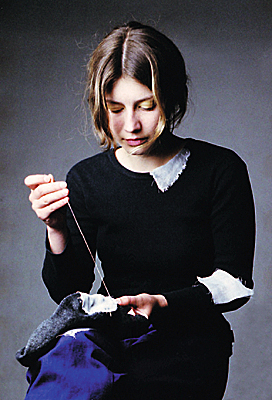
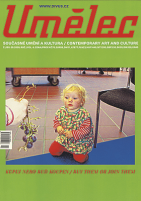
















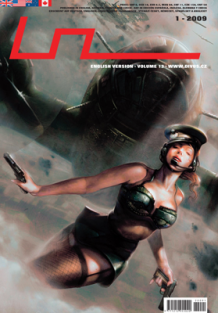




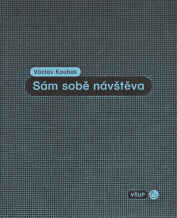
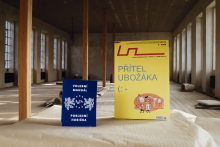
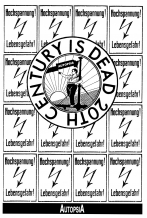
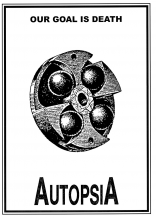


 New book by I.M.Jirous in English at our online bookshop.
New book by I.M.Jirous in English at our online bookshop.
Комментарии
Статья не была прокомментированаДобавить новый комментарий